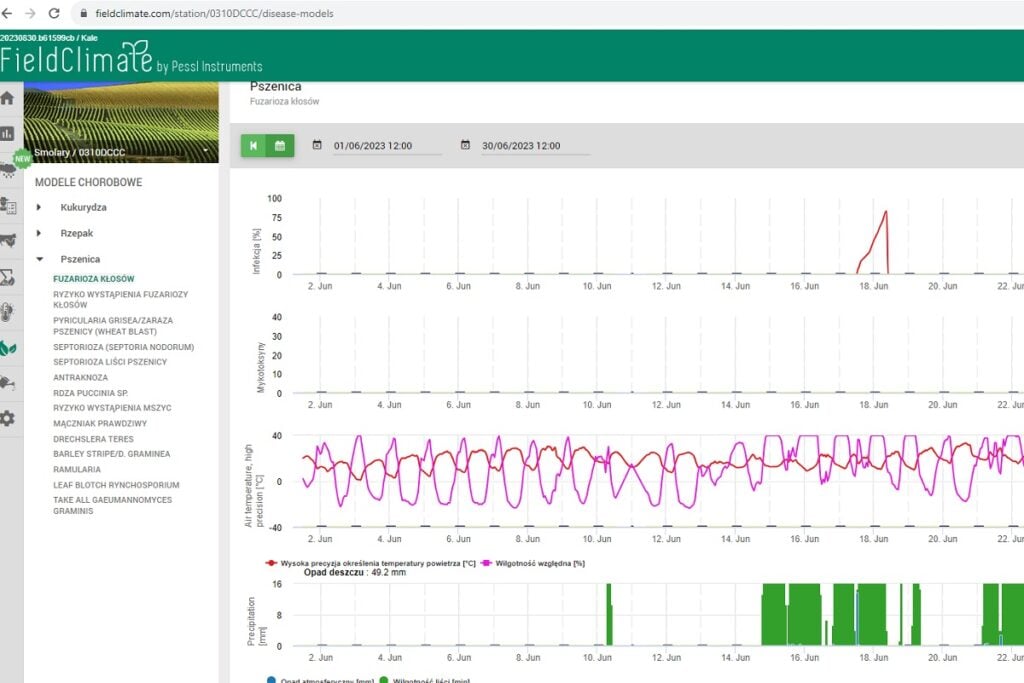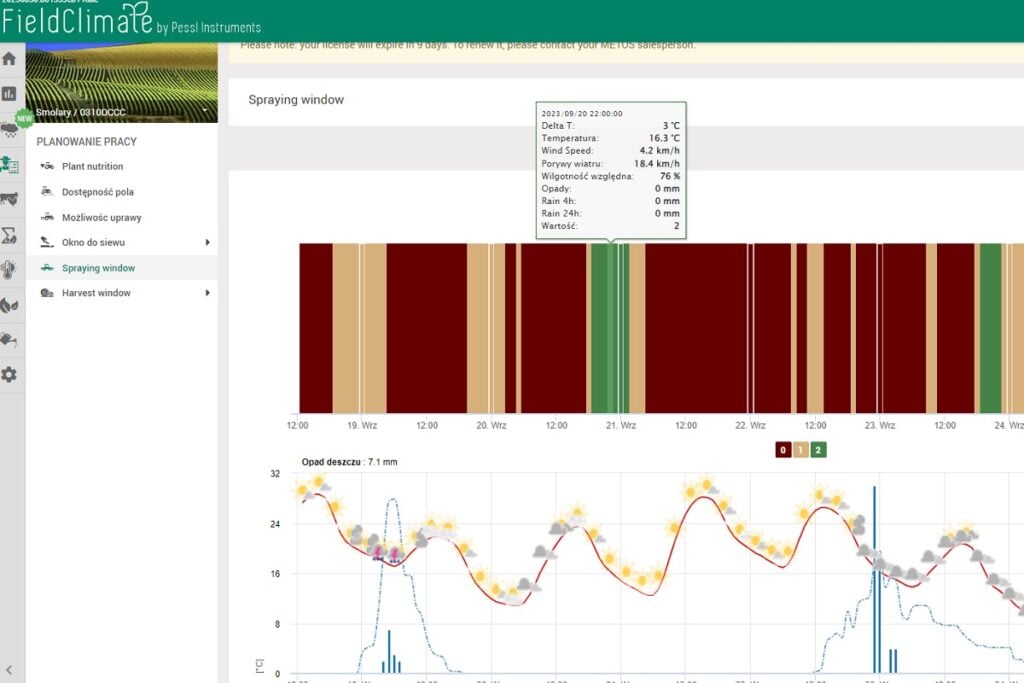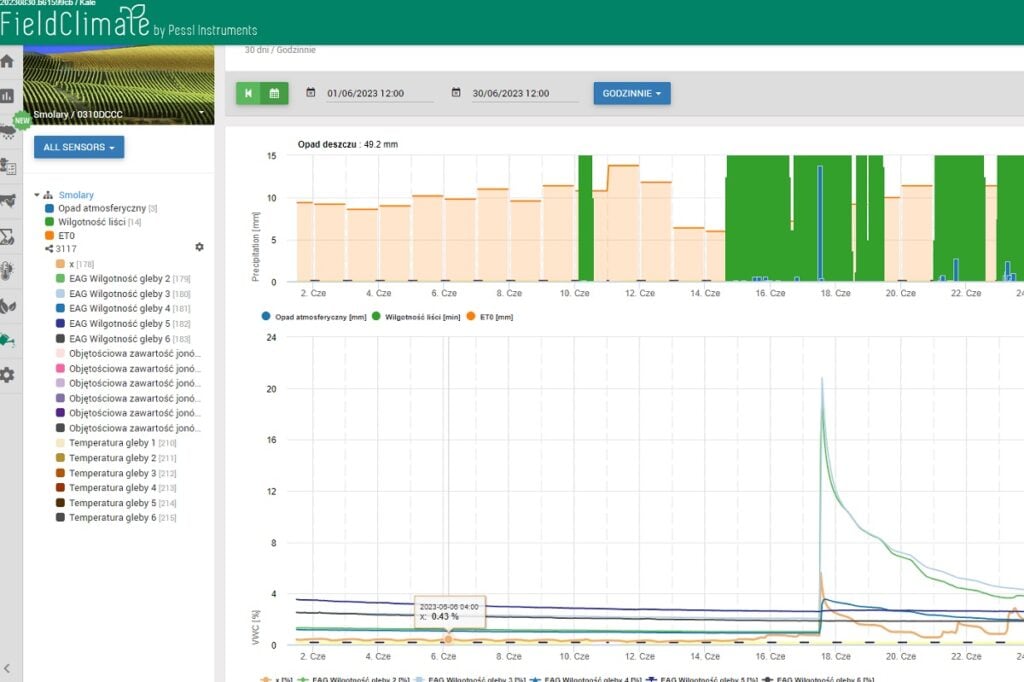The impact of weather station in agriculture is more profound than one might anticipate.
Beyond Expectations – Weather Stations Revolutionize Agriculture
At CGFP Wojnowo, each field work decision carries significant weight due to the extensive agricultural production spanning approximately 5,000 hectares. The management of this sizable enterprise is facilitated by a cutting-edge agricultural weather station supported by artificial intelligence, aiding in tasks ranging from cultivation and sowing to crop protection and harvesting.
The impact is more profound than one might anticipate.
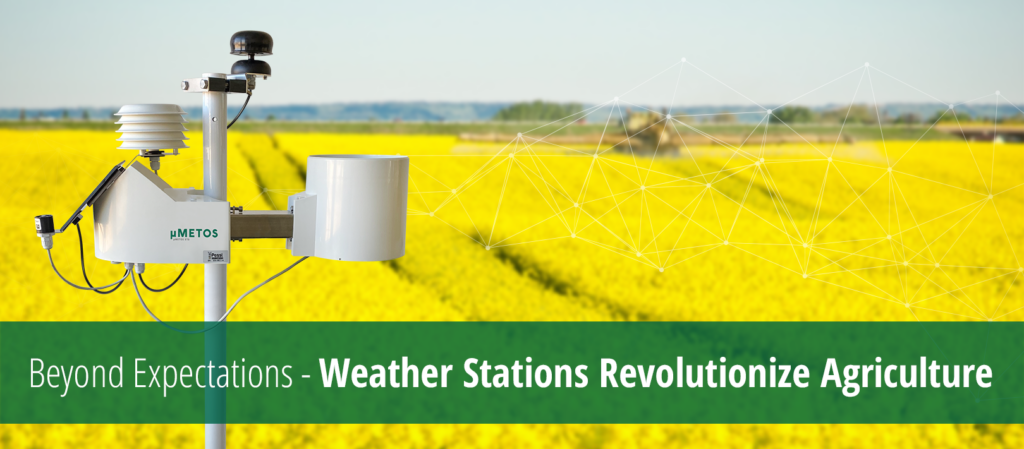
CGFP Wojnowo has utilized three µMetos NB-IoT agricultural weather stations for two seasons. These stations were provided by METOS POLSKA Sp. o.o., the representative of Pessl Instruments, an Austrian manufacturer specializing in advanced crop monitoring solutions. Pessl Instruments’ array of wireless, solar-powered equipment is available under the METOS® brand.
µMETOS NB-IoT weather station
µMETOS NB-IoT weather stations have been strategically placed in the expansive fields of CGFP Wojnowo near Bydgoszcz.
Their installation in diverse, distant locations not only enhances the precision of Hyper-Local weather forecasts but also enables comprehensive monitoring across various crops.
During the 2022/2023 season, fields equipped with µMETOS NB-IoT weather stations cultivated wheat, canola, and corn.
Referring to µMETOS NB-IoT solely as a weather station is a significant oversimplification, as the equipment is engineered to interface with a diverse array of sensors.
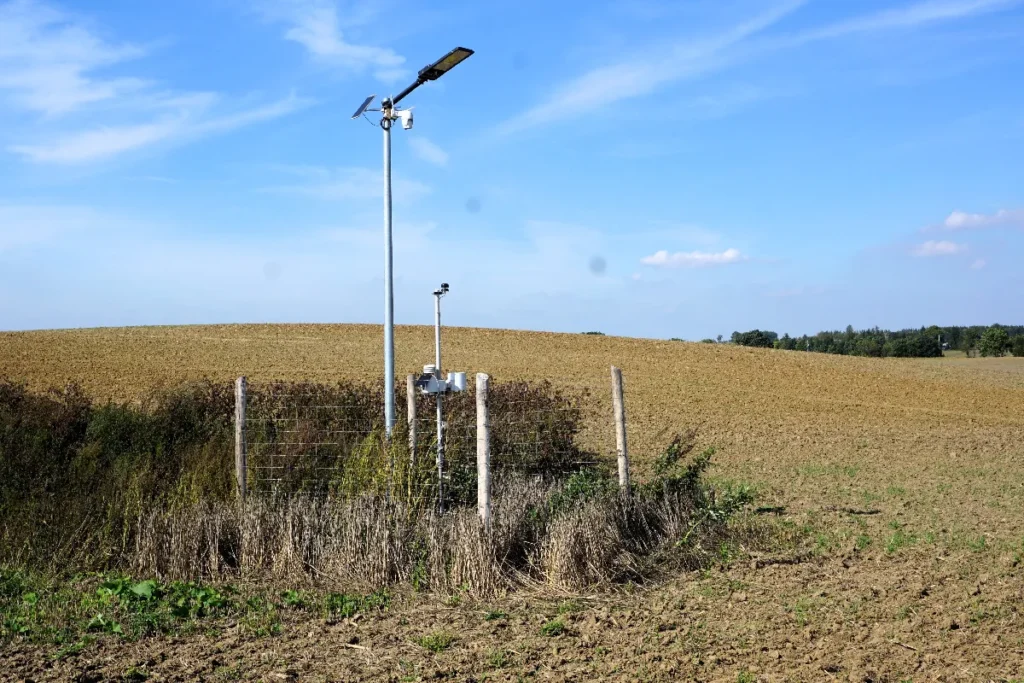
Consequently, it serves not only for tracking climate indicators such as rainfall, wind, temperature, and sunshine but also serves for the continuous evaluation of soil properties like humidity, temperature, and salinity.
Additionally, the µMETOS NB-IoT station can be customized with trap attachments for insect monitoring and disease modeling to provide insights into the potential risk posed by specific threats.
Accessing data
The µMETOS NB-IoT continuously transmits data to the data cloud through a network. By default, data is recorded at 15-minute intervals and transmitted to the server every 60 minutes, although this frequency can be adjusted to meet specific monitoring requirements.
“To address potential connectivity issues with the network, the station stores data from the previous few days and retransmits the measured values to the cloud once the network connection is restored,” as highlighted by Marek Wilanowski, the head of METOS POLSKA Sp. o.o.
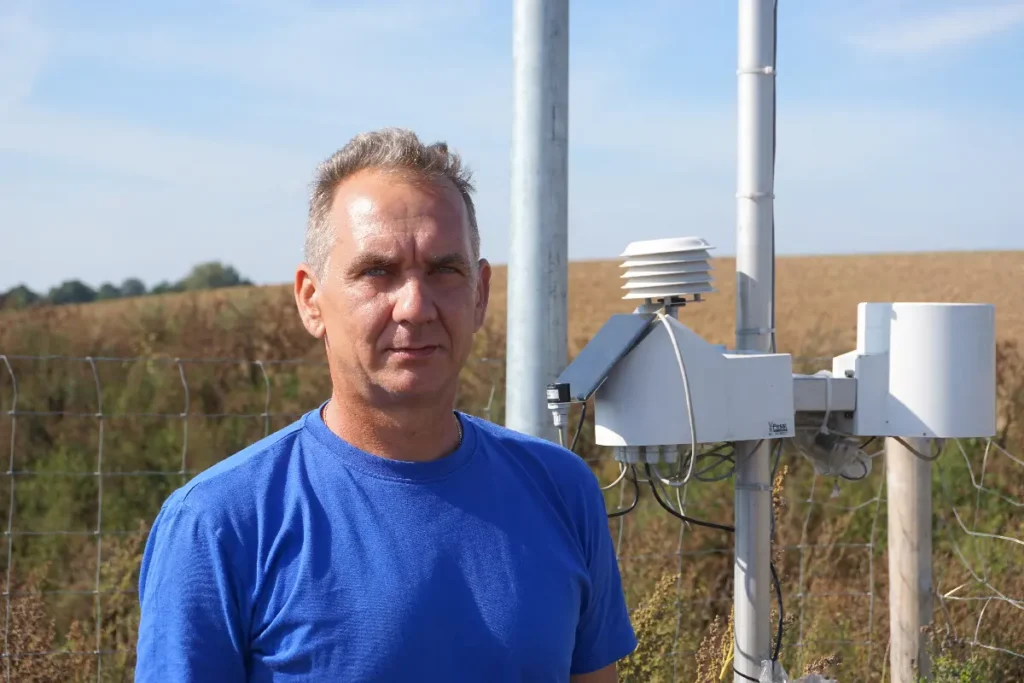
What’s important is that all collected data is synchronized and stored on the FieldClimate online platform. The user of the METOS® agricultural weather station can access it via phone, tablet or computer.
Data-driven work planning
FieldClimate offers prepared modules as part of its features, facilitating the scheduling of field activities. These modules utilize soil moisture data collected at 10 cm intervals (up to a depth of 60 cm) to recommend optimal cultivation times. Wind intensity and the Delta-T index are utilized to establish suitable spray windows. Additionally, disease modules are provided, indicating the risk of infection. FieldClimate also identifies seeding and harvesting windows.
The modules function effectively and assist us in overseeing field operations. Having constant access on the phone or computer is a valuable support. The provided window information for specific treatments is beneficial, indicating the optimal timing for carrying out the treatments. It makes decision-making easier,
says Andrzej Słomczewski, Director of the Crop Production Department at CGFP.
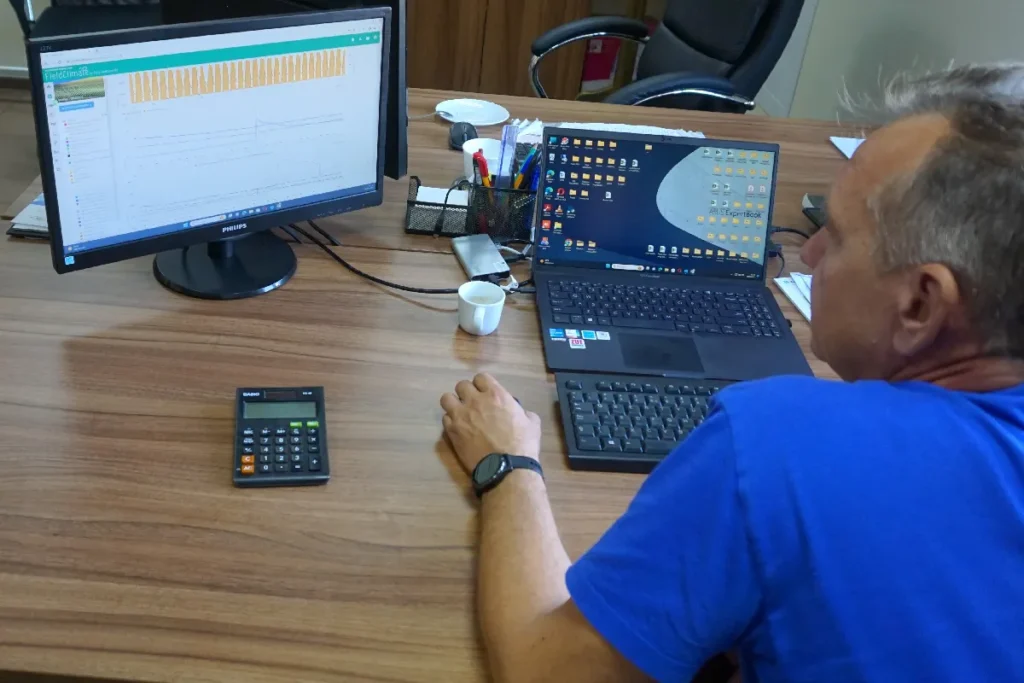
µMETOS NB-IoT stations operating at CGFP are equipped with 60 cm long Sentek Drill&Drop probes. These probes are inserted into the soil profile during plant growth to monitor temperature, water, and salinity at various depths. This allows for the continuous monitoring of factors such as soil drought and mineral content at different soil levels, with measurements taken every 10 cm.
Data interpretation
Andrzej Słomczewski acknowledges that he is continuously exploring the capabilities of the FieldClimate online platform. He values the richness and significance of the information provided and stored in the cloud. It is precisely the data that serves as added value, becoming increasingly valuable as it enables drawing conclusions and implementing improvements in crop management for the following year.
The Director of the Crop Production Department at CGFP is contemplating how to interpret data on ion content (salinity) in the soil profile, particularly concerning mineral fertilization planning.
According to Marek Wilanowski,
achieving optimal physico-chemical soil conditions is contingent upon appropriate cultivation practices, agrotechnics, the presence of organic carbon, as well as the levels of humus and soil structure.
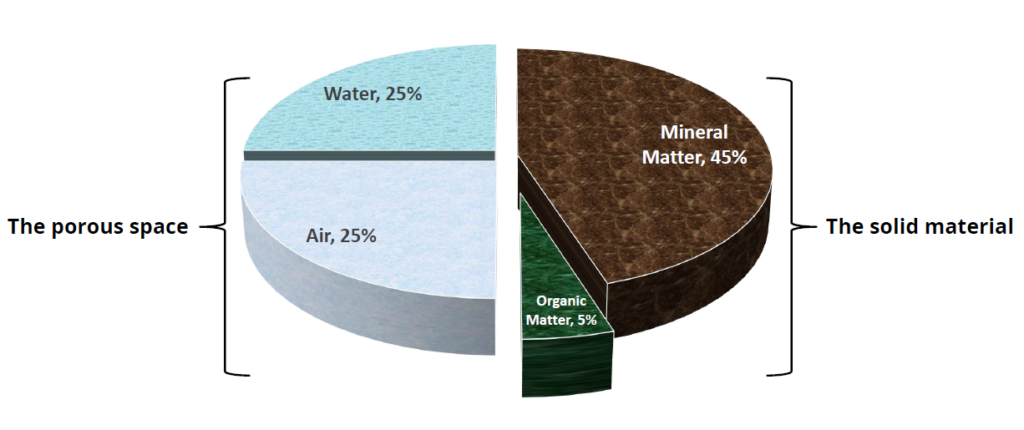
Information obtained from the Sentek soil probe is a valuable resource, particularly concerning the soil profile. Salinity, one of the parameters measured, reveals the depth to which fertilizer salt ions are washed beyond the root system, representing a quantifiable loss. The probe also identifies elevated concentrations of fertilizer ions in the root zone, and when coupled with low soil moisture and high temperatures, these conditions become harmful to plants. Additionally, their absorption decreases to below 30% when soil moisture falls below 15% volumetric water content,
as clarified by Marek Wilanowski.
The extended data collected by the soil probe enables the monitoring of water-air interactions in the soil profile, the capacity to retain water in deeper soil layers, and water absorption beneath the root system during dry periods.
In summary, the abundance of information provided by the Sentek probe simplifies the coordination of seeding, fertilization, facilitates the optimization of biological processes in the soil, and, for instance, supports the automation of irrigation.
Research project with KUL
Data from the µMETOS NB-IoT weather station is also being used in a project conducted in CGFP fields. Through the company’s collaboration with the Catholic University of Lublin (KUL) in scientific and research endeavors, the Department of Microbial Biology and Biotechnology at the Faculty of Medicine is engaged in intriguing research. Their objective is to create a computer program that aids decision-making in the context of field production of agricultural crops. This application is primarily designed to optimize fertilization, particularly nitrogen, while concurrently preserving soil fertility and biodiversity.
We concluded that there is currently no market-ready computer program meeting our expectations for fertilizer planning. As a result, in collaboration with researchers from the Catholic University of Lublin, we have opted to develop our own application.
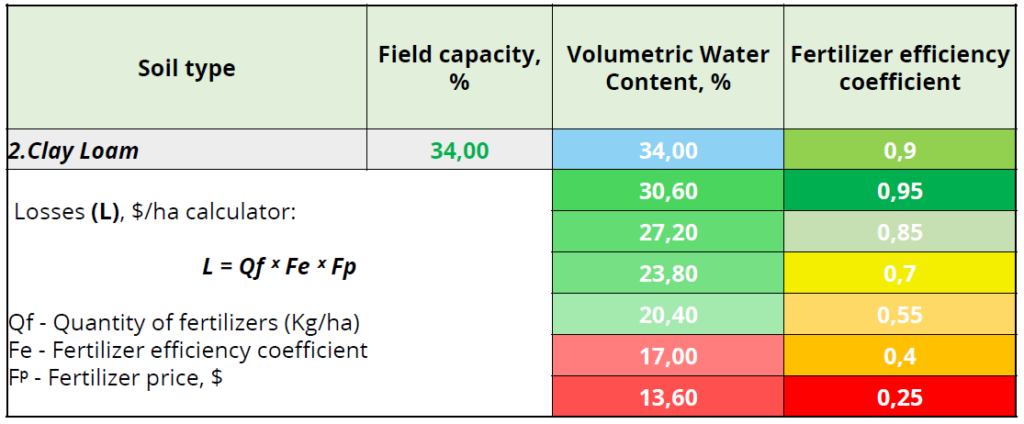
Presently, before applying the third dose of nitrogen in cereals, we utilize satellite images providing data on the NDVI (Normalized Difference Vegetation Index) greenness index. Based on discrepancies observed, we typically divide the field into three zones and conduct tests using an N-tester. This process allows us to understand the specific nitrogen requirements of plants in various locations within the field. Unfortunately, at this stage, we are unable to account for the soil’s nitrogen reserves. We anticipate that the in-progress computer program, based on data and machine learning, will assist in addressing this aspect as well,”
explains Andrzej Słomczewski.
